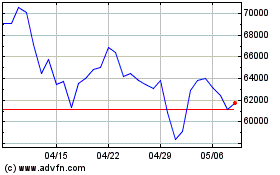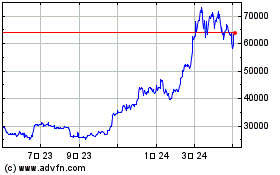Red Alert For Bitcoin: Network Hashrate Takes A 20% Dive
2024年5月17日 - 12:00AM
NEWSBTC
The post-halving world of Bitcoin continues to throw curveballs.
After a hashrate surge to celebrate the block reward reduction in
April, Bitcoin’s computational power has taken a nosedive, dropping
20% in recent weeks. Related Reading: Pepe Power! Meme Coin Surges
On Back Of GameStop Nostalgia This unexpected decline has ignited a
debate among analysts, with some sniffing out a fire sale and
others urging caution. Bitcoin: Hashrate Hiccup Or Miner Exodus?
Hashrate, a measure of the combined processing power dedicated to
securing the Bitcoin network, typically climbs after a halving
event as miners invest in more powerful rigs to compete for the
reduced rewards. However, this time around, the trend defied
expectations. Experts like Maartunn, a pseudonymous analyst at
CryptoQuant, believe this signals a potential “miner capitulation.”
Less efficient miners are now likely throwing in the towel. The
halving, which cut block rewards in half, squeezed profit margins
for miners using older equipment. As these miners shut down their
operations, the hashrate dips. Hash Ribbons Flash Warning Sign
Supporting Maartunn’s theory is a technical indicator called Hash
Ribbons. This metric tracks the difference between short-term and
long-term hashrate averages. When the gap widens, it suggests a
decline in mining activity, potentially due to less efficient
miners dropping off. The recent hashrate plunge has triggered a
spike in Hash Ribbons, historically a sign of miner capitulation
that has often coincided with price lows for Bitcoin. Bitcoin
Miners Selling Off? Further fueling the capitulation theory is a
decrease in Bitcoin’s Miner Reserve. This metric tracks the amount
of Bitcoin held in wallets associated with miners. A decline in the
reserve suggests miners might be offloading their mined coins,
potentially to cover operational costs or to exit the market
altogether. Undervaluation Signal Or Cyclical Dip? Maartunn
interprets these signs as a bullish indicator. Hash Ribbons often
point to opportune moments to buy, he argues. Backing his claim is
the Market Value to Realized Value (MVRV) ratio, which suggests
Bitcoin might be undervalued. This metric compares the current
market price to the average price at which all Bitcoins were
acquired. A negative MVRV, like the one Bitcoin currently has,
suggests the asset is trading below its historical cost basis,
potentially indicating a buying opportunity. Related Reading:
Buckle Up, XRP Fans: Analyst Eyes Price Explosion To $0.65 In Next
5 Days Not Everyone On The Capitulation Train However, not all
analysts are convinced. Some argue that the hashrate decline could
be temporary, perhaps due to factors like extreme weather events
disrupting mining operations in certain regions. Additionally, the
post-halving period is typically one of adjustment for miners, and
a short-term hashrate fluctuation might not necessarily signal a
mass exodus. The post-halving Bitcoin landscape is still unfolding.
While the hashrate decline and other signs suggest a potential
buying opportunity, particularly for long-term investors, the
situation remains fluid. Featured image from Shutterstock, chart
from TradingView
Bitcoin (COIN:BTCUSD)
過去 株価チャート
から 5 2024 まで 6 2024

Bitcoin (COIN:BTCUSD)
過去 株価チャート
から 6 2023 まで 6 2024
